#PlainLanguage
Explore tagged Tumblr posts
Text
5 Important Communication Lessons for Science communicators From Richard Saul Wurman
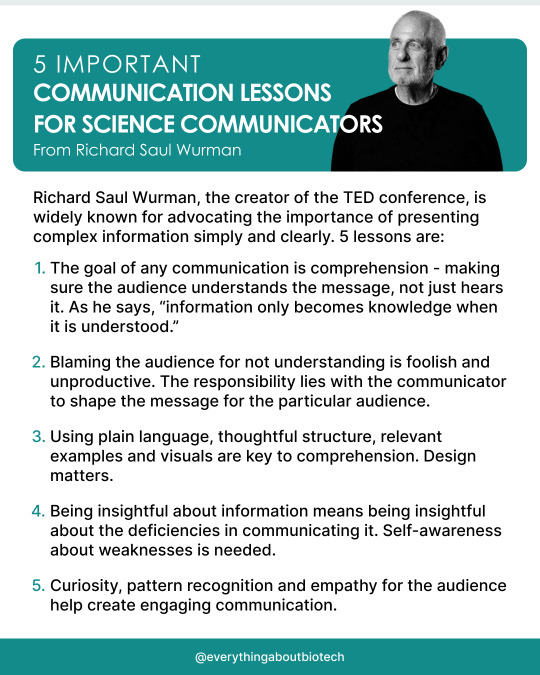
Richard Saul Wurman, the creator of the TED conference, is widely known for advocating the importance of presenting complex information simply and clearly. 5 lessons are:
The goal of any communication is comprehension - making sure the audience understands the message, not just hears it. As he says, “information only becomes knowledge when it is understood.”
Blaming the audience for not understanding is foolish and unproductive. The responsibility lies with the communicator to shape the message for the particular audience.
Using plain language, thoughtful structure, relevant examples and visuals are key to comprehension. Design matters.
Being insightful about information means being insightful about the deficiencies in communicating it. Self-awareness about weaknesses is needed.
Curiosity, pattern recognition and empathy for the audience help create engaging communication.
Follow @everythingaboutbiotech for more useful posts.
#SciComm#ScienceCommunication#PlainLanguage#AudienceFirst#DontBlameTheReader#Storytelling#DataViz#DataVisualization#Analogies#EmpathyInScience#InsightsNotJustInfo#ServeHeartsAndMinds#JoyOfScience#ClearCommunication#SimplifyComplexity#ClarityInspiresAction#BewareCurseOfKnowledge#BuildTheBridge#SkilledStoryteller#EnlightenAndEmpower
5 notes
·
View notes
Text
Why Your Manuals Will Fail in 2025 (and How to Fix Them With 1 AI Hack You’ve Never Tried)

The Rise of Frictionless Communication
By 2025, the demand for clear, accessible technical writing will skyrocket. With AI-driven tools, immersive user guides, and a global audience hungry for simplicity, technical writers are no longer just translators of jargon — they’re architects of understanding. In fact, 82% of consumers say poorly explained technical content damages their trust in a brand (Adobe, 2024). Ready to future-proof your documentation? Let’s explore how technical writing in 2025 is breaking barriers, one plain-language sentence at a time.
Want the full breakdown? Read the full article
#TechWriting2025#AIClarity#UserCentricDesign#PlainLanguage#FutureOfWork#AIWriting#InclusiveTech#ARLearning#ComplianceMatters#TechTrends2025#DigitalTransformation#ContentCreation#SimplifiedTech#LearnSomethingNew#CareerGrowth#UXWriting#AITools#InnovationInTech#RegulatoryAffairs#ClearCommunication
0 notes
Text
Article
My article on plain language system messages was published in the Plain Language Association International (PLAIN) E-Journal Vol 6 Issue 2. I am very pleased! Thank you to the Managing Editor Hannah Sapunor-Davis. The theme of the issue is: Culture of Plain Language. Additional information on the issue is available at: https://www.linkedin.com/pulse/plain-e-journal-vol-6-issue-2-plain-language-association-interna-el9gf/?trackingId=AJVw0cKsl0HinuncIWjV6A%3D%3D.
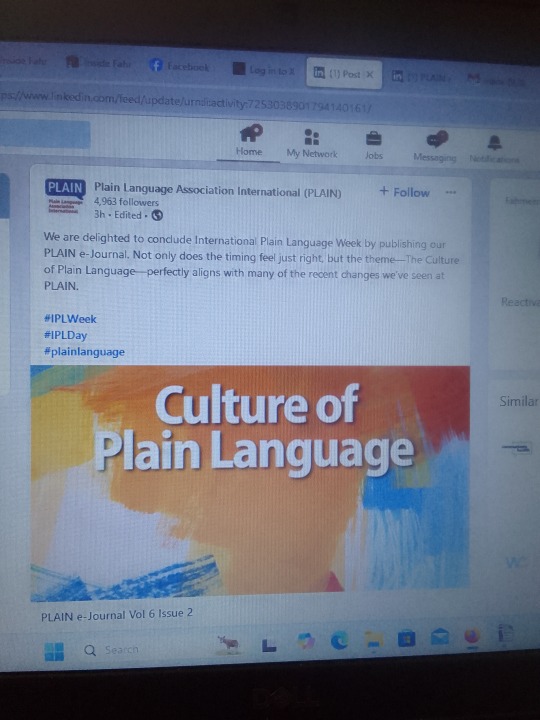
0 notes
Text
https://grammar-girl.simplecast.com/episodes/302-gg-passive-voice-1OKUYUrh 🇧🇷
Don't be passive! @grammargirl #grammar #plainwriting #plainlanguage
0 notes
Text
The Dilemma of Indian English - Part 1
A criticism of legalese, commercialese, journalese and officialese highlighting the different between the old Victorian style and the new modern style of plain English. Part 1 of 4.
https://www.musingsinbiology.com/post/the-dilemma-of-indian-english-part-1
0 notes
Photo

Spot illustrations created by @miguelporlan for National Magazine (Canada) about plain language, paying fair share and 1984, an "orwellian" requierement for Ontario lawyers. #miguelporlan #illustration #spotillustration #nationalmagazine #plainlanguage #fairshare #lawyer #purplerainillustrators #magazineillustration
#plainlanguage#magazineillustration#lawyer#illustration#purplerainillustrators#spotillustration#miguelporlan#nationalmagazine#fairshare
0 notes
Text
Let’s Talk Periods

Alt: Doodles in the background say, “Aunt Flo’s in town!” and “Guess it’s that time of the month!” A doodle in the foreground says, “Just call it a period — period.”
Here at We ❤ Health Literacy Headquarters, periods are our second favorite punctuation mark. (You’ll always be first in our heart, em dash!) But that’s not what we’re talking about today. We’re here to chat about the other kind of period — the menstrual kind.
As you know, dear readers, we always aim to use clear and accurate language to talk about bodies — even some of those, ahem, less elegant functions — and periods are no exception. Check out these tips:
Stick to plain language words like “period.” “Menstruation” is a bit much, so just call it a period when you can. In more in-depth materials, where “menstruation” and “menstrual” may be need-to-know terms, be sure to include a definition. We ❤ this one from Planned Parenthood: “Menstruation — aka having your period — is when blood and tissue from your uterus comes out of your vagina. It usually happens every month.”
Skip the euphemisms. When you’re texting your BFF, feel free to talk about “a visit from Aunt Flo” or “that time of the month.” But these terms may not be clear to everyone, so we generally leave them out of our health materials. Speaking of which…
Know your audience. In particular, attitudes around periods vary a lot in different cultures. When in doubt, test with your intended audience to make sure your content resonates.
Leave “feminine” out of it. Equating periods with womanhood is not a good look. There are plenty of women who don’t have periods — because they are transgender, take certain medicines, or have a health condition like PCOS (polycystic ovary syndrome) or low body weight. And there are plenty of transgender men and non-binary people who do have them. Plus, gendered terms like “feminine products” are way less clear than alternatives like… wait for it… “pads and tampons.”
The bottom line: When writing about menstruation, choose clear, plain language terms that everyone can understand. Period.
Tweet about it: Let’s talk periods. (No, not the grammatical kind!) Check out @CommunicateHlth’s tips on writing inclusive #PlainLanguage content about menstruation: https://bit.ly/3vgg8RS #HealthLit
Let’s Talk Periods was originally published in wehearthealthliteracy on Medium, where people are continuing the conversation by highlighting and responding to this story.
Let’s Talk Periods published first on https://drugaddictionsrehab.tumblr.com/
0 notes
Text
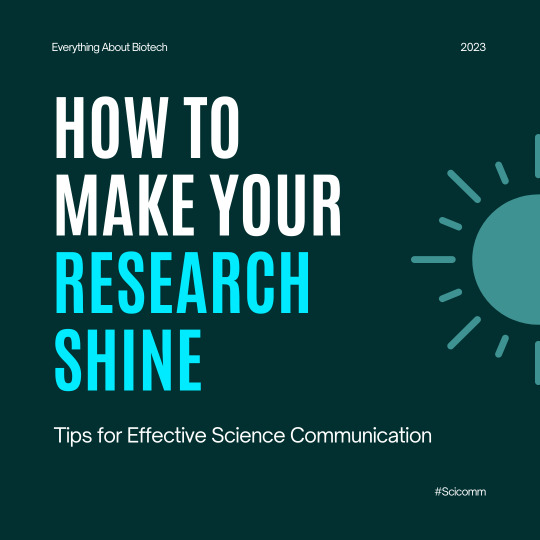

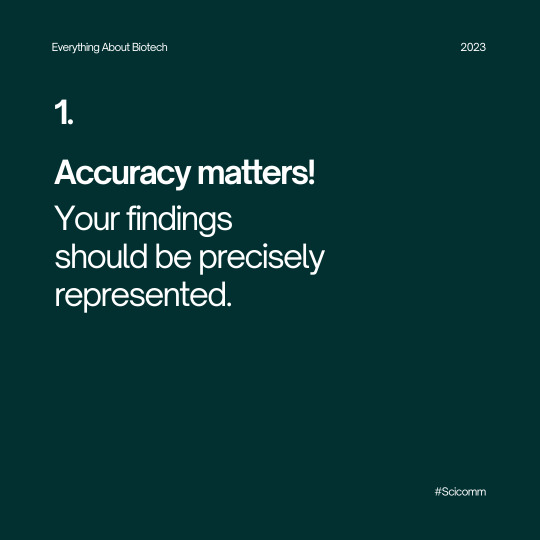
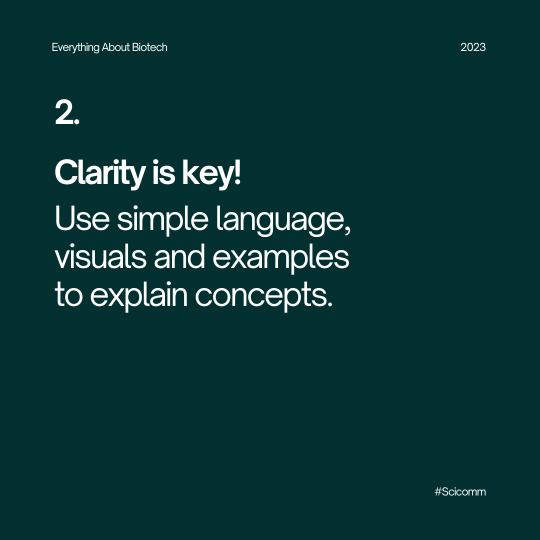
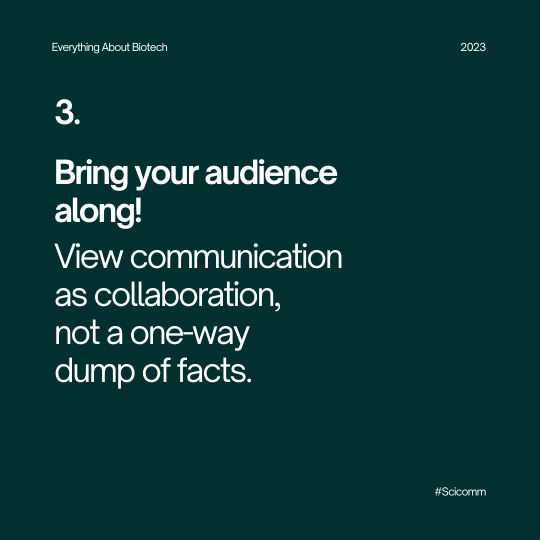

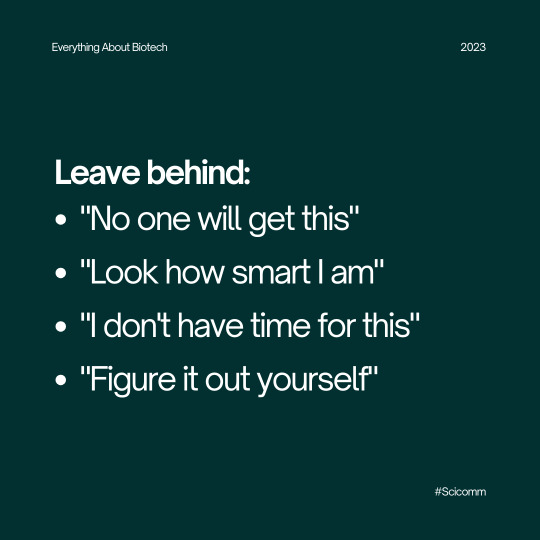
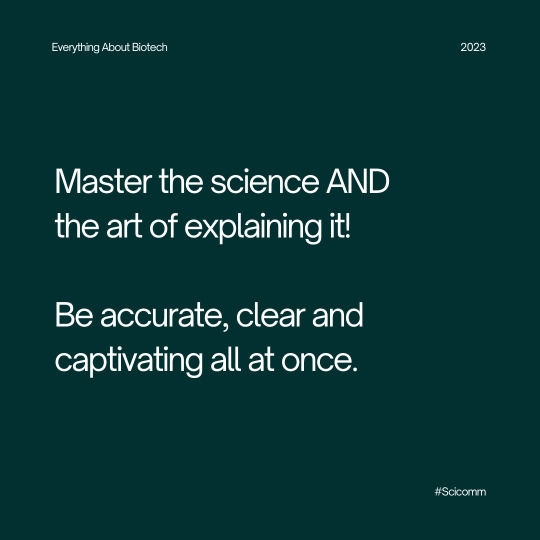

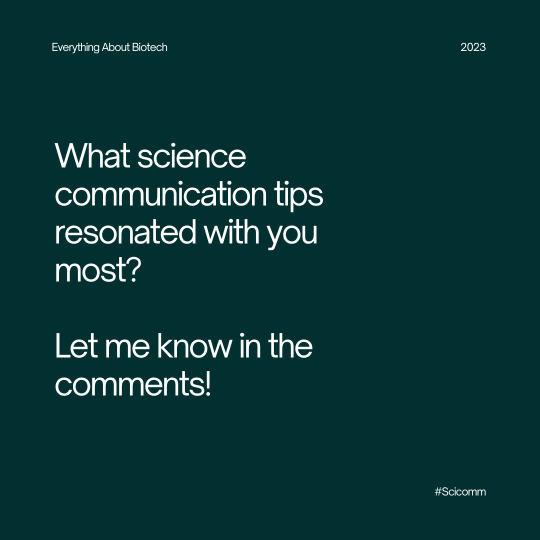
Hey scientists, learn how to make your research shine! 🤩
In this post, we share tips for accurately and clearly conveying complex concepts to broad audiences.
Learn how to move beyond jargon, engage your readers, and bring passion to difficult subjects. Whether you're creating content for social media, presentations, or journal articles, these tips will help you explain your work with style. Master both the science and the art of communication!
Let us know: which tips resonated most with you? How do you make your research shine? Share this post with fellow scientists and students who want to turn their findings into captivating and accessible content!
#scicomm#science#scientist#research#STEM#sciencetranslation#publicscience#plainlanguage#dataviz#infographics#facts#accuracy#credibility#engagement#outreach#simplifyingscience#scientificliteracy#understanding#comprehension#clarity#examples#analogies#visualaids#captivating#fascinating#intriguing#masteringboth#scientificart#scienceshine#PhDlife
5 notes
·
View notes
Text
Let’s Talk Periods

Alt: Doodles in the background say, “Aunt Flo’s in town!” and “Guess it’s that time of the month!” A doodle in the foreground says, “Just call it a period — period.”
Here at We ❤ Health Literacy Headquarters, periods are our second favorite punctuation mark. (You’ll always be first in our heart, em dash!) But that’s not what we’re talking about today. We’re here to chat about the other kind of period — the menstrual kind.
As you know, dear readers, we always aim to use clear and accurate language to talk about bodies — even some of those, ahem, less elegant functions — and periods are no exception. Check out these tips:
Stick to plain language words like “period.” “Menstruation” is a bit much, so just call it a period when you can. In more in-depth materials, where “menstruation” and “menstrual” may be need-to-know terms, be sure to include a definition. We ❤ this one from Planned Parenthood: “Menstruation — aka having your period — is when blood and tissue from your uterus comes out of your vagina. It usually happens every month.”
Skip the euphemisms. When you’re texting your BFF, feel free to talk about “a visit from Aunt Flo” or “that time of the month.” But these terms may not be clear to everyone, so we generally leave them out of our health materials. Speaking of which…
Know your audience. In particular, attitudes around periods vary a lot in different cultures. When in doubt, test with your intended audience to make sure your content resonates.
Leave “feminine” out of it. Equating periods with womanhood is not a good look. There are plenty of women who don’t have periods — because they are transgender, take certain medicines, or have a health condition like PCOS (polycystic ovary syndrome) or low body weight. And there are plenty of transgender men and non-binary people who do have them. Plus, gendered terms like “feminine products” are way less clear than alternatives like… wait for it… “pads and tampons.”
The bottom line: When writing about menstruation, choose clear, plain language terms that everyone can understand. Period.
Tweet about it: Let’s talk periods. (No, not the grammatical kind!) Check out @CommunicateHlth’s tips on writing inclusive #PlainLanguage content about menstruation: https://bit.ly/3vgg8RS #HealthLit
Let’s Talk Periods was originally published in wehearthealthliteracy on Medium, where people are continuing the conversation by highlighting and responding to this story.
Let’s Talk Periods published first on https://brightendentalhouston.weebly.com/
0 notes
Text
Plain Language Exercises
Practicing my plain language:

Oliver is employed at a nonprofit organization that is all about reducing (or works to reduce) waste from bodies of water, such as the lake, in the state where its headquarters is located.
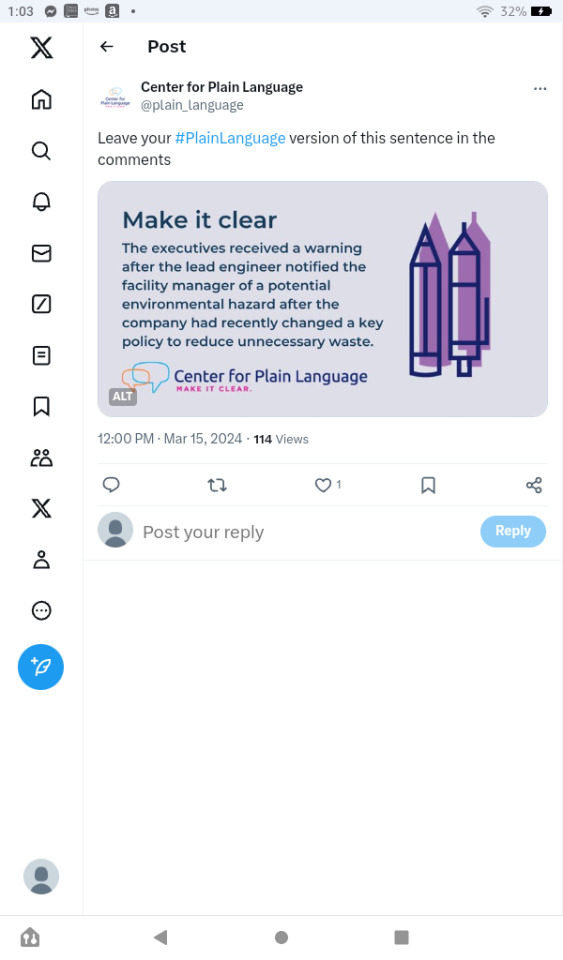
The executives received a warning because they had recently changed a key environmental policy with the goal of reducing environmental waste, and that change was followed by the lead engineer reporting a potential environmental hazard to the facility manager.
Exercises by the Center for Plain Language. Page for Center for Plain Language in Twitter/X: https://twitter.com/plain_language
0 notes
Link
0 notes
Text
0 notes
Photo

Transparency and Public Interest: Striking a Balance As from next year, life sciences firms will be expected to prepare plainlanguage summaries (PLSs) for all Phase I–IV interventional trials, to comply with requirements for greater transparency around clinical research as part of the EU Clinical Trials Regulation 536/2014 (EU CTR Article 37).
0 notes
Audio
"I wore your hairband around my wrist, spit out my gum before the first time that we kissed"
2 notes
·
View notes
Text
Explaining mRNA Vaccines
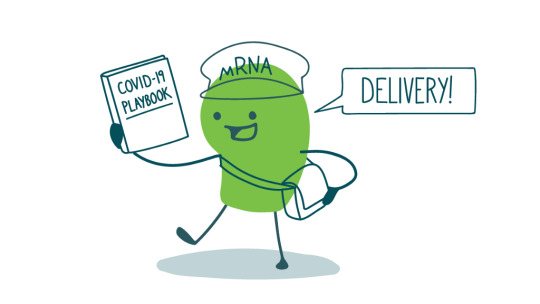
Alt: A doodle wearing a messenger bag and a hat labeled “mRNA” holds up a COVID-19 playbook and says, “Delivery!”
Now that folks are starting to get COVID-19 vaccines, many people are eagerly awaiting their turn in line. But because the first 2 COVID-19 vaccines authorized in the United States are a new type — called mRNA vaccines — lots of people also have questions about how they work.
If you’re still getting up to speed on mRNA vaccines yourself, here’s the gist: mRNA stands for messenger RNA — and the messages these vaccines carry are like instructions for your immune system.
All vaccines work by training your immune system to recognize and fight off a specific germ before it has a chance to make you sick. Traditional vaccines use the germ itself for this “training” — either a weakened or dead form of the germ, or a small part of the germ.
But mRNA vaccines don’t have any of the germ in them at all! Instead, they deliver a small strip of genetic code (the mRNA) that teaches your immune cells to make and recognize a key protein — in this case, the spike protein on the surface of the COVID-19 virus.
Once your immune system recognizes the spike protein, it reacts just like it would to the actual COVID-19 virus — by creating antibodies to fight it off. Then if the COVID-19 virus shows up, the antibodies will be ready to stop it in its tracks.
To round out this feast of vaccine facts, try offering your readers few tasty truth sandwiches:
mRNA vaccines can’t give you COVID-19. Remember, there’s no virus in them — and the spike protein can’t give you COVID-19 either.
The 2 mRNA COVID-19 vaccines are safe and effective. Researchers worked as fast as possible to get the vaccines ready — but they didn’t skip any steps or cut any corners. The researchers completed all the usual phases of clinical trials and gave the vaccines to tens of thousands of people, so we can be confident that they’re safe and that they work to prevent COVID-19.
mRNA vaccines don’t change your genes. You may have heard concerns that the mRNA in vaccines could stay in your cells and affect your DNA, but that’s not true. In fact, your body destroys the mRNA from the vaccine within a few hours after you get vaccinated. The mRNA shows up, does its job, and then it’s outta there!
Serious side effects from these vaccines are rare, and getting vaccinated is much less risky than getting COVID-19. It’s common for people who get the vaccine to get a headache or fever or to feel tired and achy for a day or 2 — and that’s actually a good thing! These are signs that the vaccine is working.
And while you’re spreading the good news about the new vaccines, remember to encourage people to keep taking other steps to prevent the spread of COVID-19 before and after they get vaccinated. It’ll be a while before most people can get the vaccine, so it’s important to continue doing everything we can to keep everyone safe.
The bottom line: Explaining mRNA COVID-19 vaccines in plain language can help ease people’s fears — and make it more likely they’ll choose to get vaccinated.
Tweet about it: Want to explain mRNA #COVID19 vaccines in #PlainLanguage? @CommunicateHlth can help: https://bit.ly/3bZ4y6i #communicateCOVID
Explaining mRNA Vaccines was originally published in wehearthealthliteracy on Medium, where people are continuing the conversation by highlighting and responding to this story.
Explaining mRNA Vaccines published first on https://drugaddictionsrehab.tumblr.com/
0 notes
Text
Scientists, researchers, educators! Are you looking for tools and resources to better communicate your work? I'm working on this project quite a sometimes.
👉Do you want early access to this database? Say "Hey" in the comments.
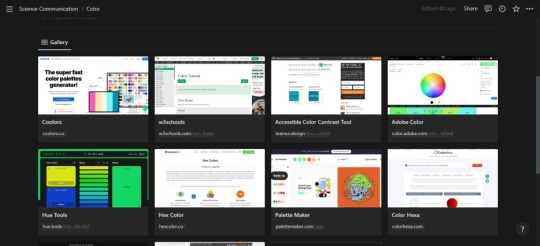
#ScienceOutreach#PublicEngagement#SciComm#VisualizeScience#PlainLanguage#ExpertVoices#ResearchCommunication
4 notes
·
View notes